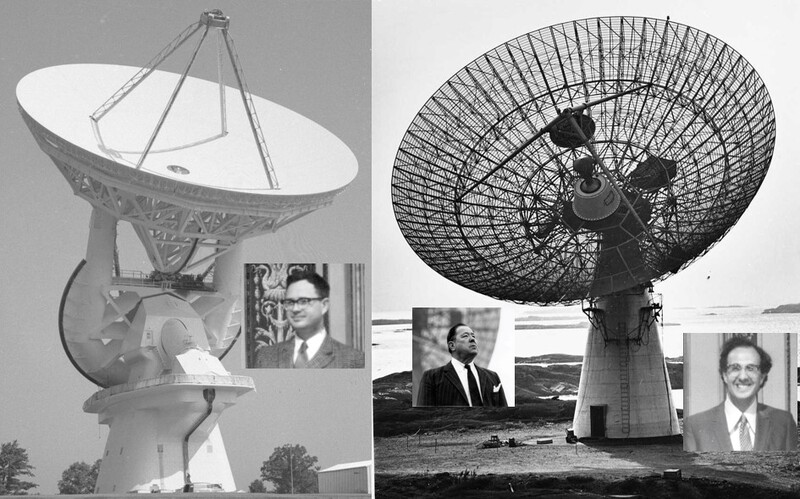First International VLBI Observations, January 1968
Description
Through the spring and summer of 1967, the first successful interferometric observations with widely spaced antennas were made between NRAO's 85 Foot Tatel telescope and NRL's Maryland Point 85 foot, between the Algonquin Park 150 foot and the Penticton 25 meter, and using the MIT/Haystack 120 foot, the NRAO 140 foot, and the Hat Creek 85 foot. Olaf Rydbeck, Sweden's Onsala Observatory Director, wanted to get into VLBI, and his connection with Hein Hvatum, Rydbeck's former student who was at NRAO, led to plans for an NRAO-Onsala experiment. Another of Rydbeck’s students, Erick Kolberg, became the world’s expert in building maser amplifiers for radio astronomy, and his sensitive receivers using traveling wave masers were one of the attractions of using Onsala for VLBI. Recorders and clocks were shipped from Green Bank to Onsala, and the first international VLBI observations on 27 January-3 February 1968, at both 6 and 18 cm with a baseline of 6319 km, showed that some quasars and AGN were smaller than one thousandth of an arcsec. This was the highest angular resolution ever obtained for any astronomical observation; results were reported in ApJ. Within a year interferometer baselines had increased to intercontinental distances and the angular resolution to better than one thousandth of an arcsec.
The 1971 Rumsford Prize was awarded jointly to the NRAO-Cornell, MIT-Haystack, and Canadian VLBI teams for their development of long-baseline interferometry.
The photo is a composite showing the NRAO 140 Foot, with Barry Clark, who developed most of the technology for the VLBI observations and headed up the observations in Green Bank, and the Onsala 85 foot, with Olaf Rydbeck and Ken Kellermann; Ken and Claude Bare traveled from NRAO to Onsala for the observations.
The 1971 Rumsford Prize was awarded jointly to the NRAO-Cornell, MIT-Haystack, and Canadian VLBI teams for their development of long-baseline interferometry.
The photo is a composite showing the NRAO 140 Foot, with Barry Clark, who developed most of the technology for the VLBI observations and headed up the observations in Green Bank, and the Onsala 85 foot, with Olaf Rydbeck and Ken Kellermann; Ken and Claude Bare traveled from NRAO to Onsala for the observations.
Creator
Records of the NRAO
Rights
NRAO/AUI/NSF
Type
Still Image
Identifier
VLBI-1968-composite-2.jpg
Start Date
1968-01-27
End Date
1968-02-03
Photo Credit
NRAO/AUI/NSF
Series
Photographs Series
Unit
140 Foot Telescope Unit
Citation
Records of the NRAO, “First International VLBI Observations, January 1968,” NRAO/AUI Archives, accessed June 13, 2025, https://www.nrao.edu/archives/items/show/43054.

